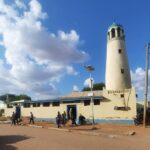 By our correspondent
By our correspondent
Garissa — The much anticipated Garissa County solar project has been commissioned this week with expectations to yield 54 megawatts of power into the national grid.
The ambitious project that will be set up on a piece of land measuring 80 acres is expected to cost Sh. 13 billion, the biggest in East and Central Africa.
“The government is determined to lower the cost of power. That is why we are going for cheap and cost-effective power projects,” Energy CS Charles Keter said while speaking during inspection of the plant.“The government is investing more in solar power to bring the cost of power drastically down”
The green energy plant will consist of 300,000 solar panels and it is expected to provide electricity to more than 200,000 households.
The government said the project will reduce emissions thus advancing the global fight against climate change. It is been implemented by the national government and funded by Exim Bank of China.
Keter who was accompanied by top officials from Rural Electrification Authority, said he was impressed by the contractor’s work. The solar power plant will be opened by President Uhuru Kenyatta on September 24.
Elsewhere, the CS hinted that the Rural Electrification Authority is implementing 25 solar mini-grids to power small towns in the off-grid areas such as Mandera, Wajir, Garissa, Marsabit and Turkana.
“The government is looking for funds to finance power projects in off-grid areas to ensure Kenyans have access to electricity”
National Assembly Majority leader Aden Duale said that such project is expected to spur economic growth of not only in Garissa County but throughout the parched and bare Northeastern region.
“The project will enhance the economic development of the region by boosting businesses and other economic activities,” Duale said.
Electricity in Kenya is transmitted and sold by a monopoly firm, Kenya Power. The government controls 50.1% of the utility’s shares, with private investors holding the rest.
Kenya’s Northeastern region is among the regions where access to electricity is the lowest in the country hampering sustainable economic development.















